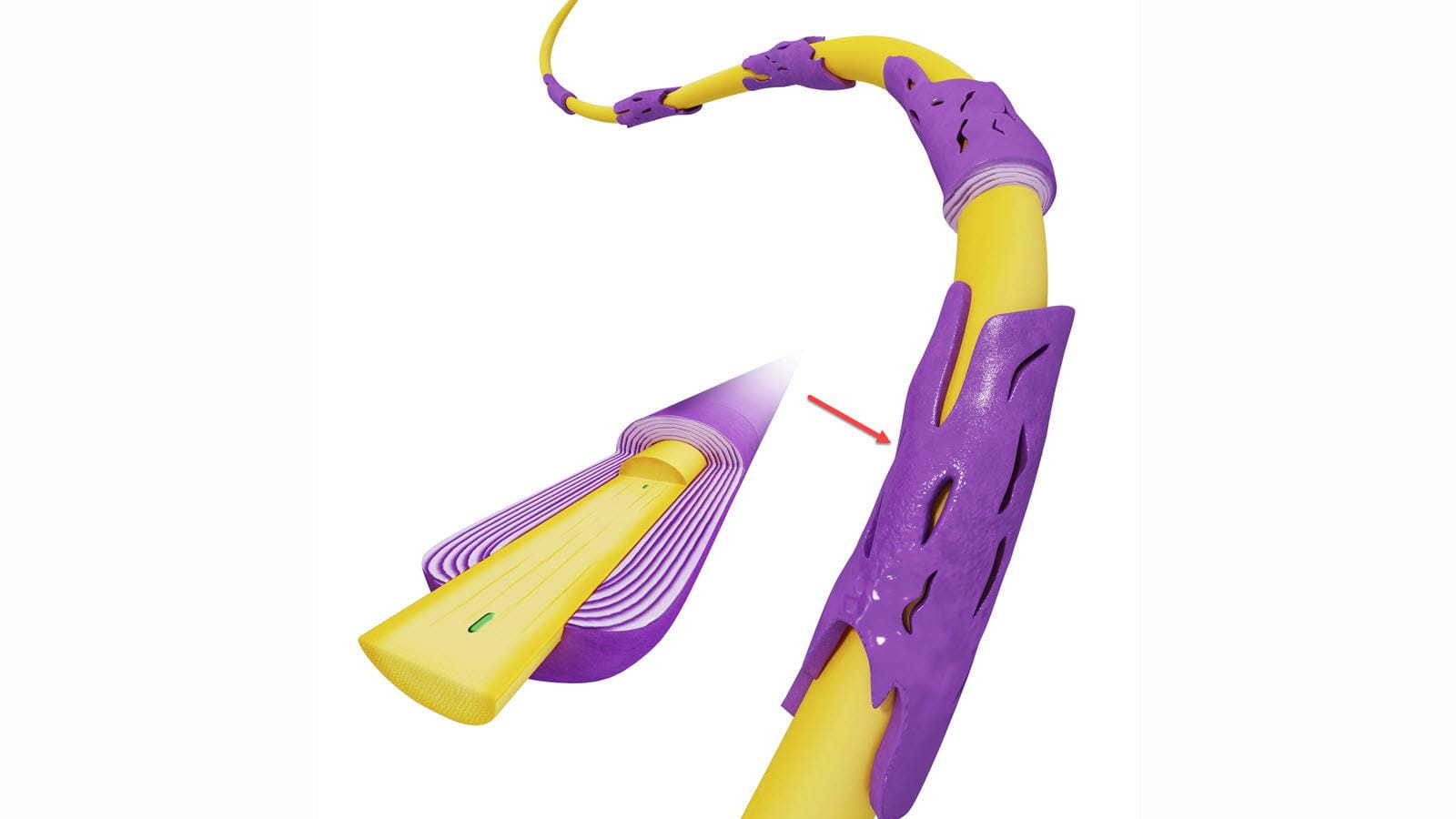Massive amounts of information are transmitted to and from our brain through the nervous system. Vision, taste, touch, smell and movement are all processed as electrical impulses and sent throughout a network of wire-like nerve cells before we experience them.
All of which happens in an instant – up to approximately 270 miles an hour.
The ability to send each signal efficiently at such speeds is due to a structure known as myelin – an insulating covering consisting of protein and lipids that wrap around the long sections of each nerve cell, called axons. But unlike the insulation on electrical wires which covers its entire length, myelin sheaths cover sections of the axon with short gaps in between called the nodes, sectioned much like boxcars of a train with small gaps between each.
Let’s take a simple message that travels through sets of nerve cells between the fingers and the brain. Healthy myelinated nerves will – very quickly – send the brain a message that “the stove is hot.” Then a person’s muscles know what to do next – move your hand away from the hot stove!
Damaged or destroyed myelin disrupts the message-sending process to and from the brain. That’s called demyelinating. It’s also the “D” in the name of the rare disease CIDP, which stands for Chronic Inflammatory Demyelinating Polyneuropathy. CIDP causes numbness, tingling, weakness and loss of reflexes.
In CIDP, the immune system mistakenly attacks protective myelin. When the myelin is damaged or removed, messages transmitted to and from the brain are disrupted and may never make it to their final destination. The symptoms a patient feels depends on where the myelin was attacked.
In various conditions, demyelinating can cause neurological problems, including:
- Vision loss
- Muscle weakness
- Muscle stiffness
- Muscle spasms
- Changes in bladder and bowel function
- Sensory changes
Learn more about CIDP from patients who have moved through the various stages of diagnosis and treatment:
Before diagnosis video
Diagnosis video
Treatment video
Ongoing management video



